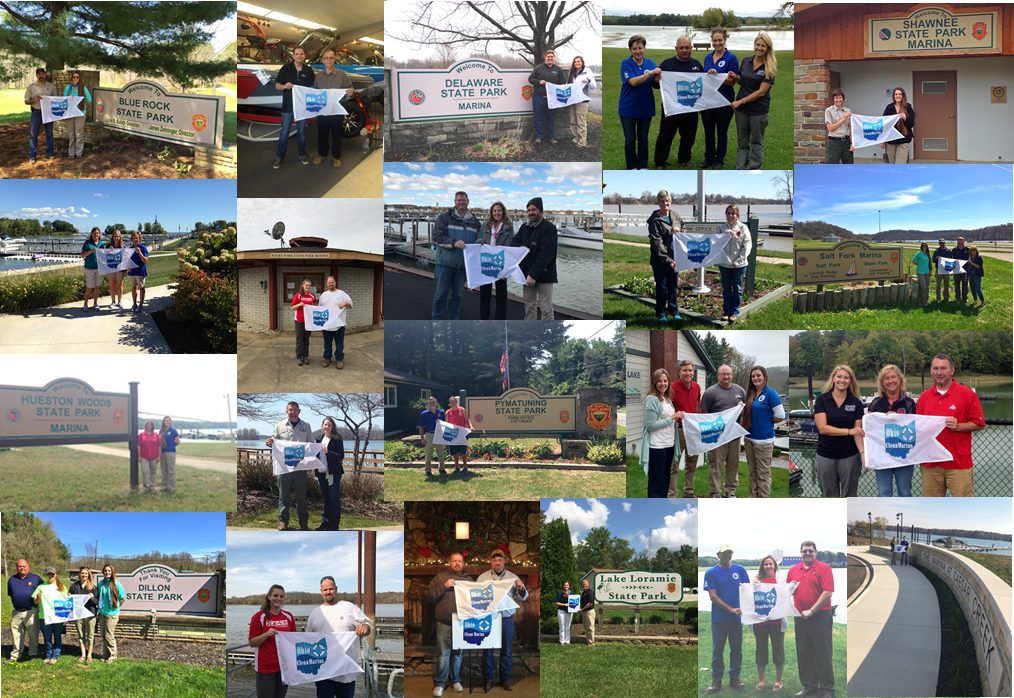 I have the best job in the world. As an extension educator for Ohio Sea Grant and OSU Extension, my job is to help communicate science in an easy-to-understand way to the public. When I started in this role, this was done mostly through in person meetings, phone calls, emails, and within educational settings such as outreach events. I still continue to communicate with the public and my stakeholders through these outlets, but I have added a new approach for reaching others to this list: social media.
I have the best job in the world. As an extension educator for Ohio Sea Grant and OSU Extension, my job is to help communicate science in an easy-to-understand way to the public. When I started in this role, this was done mostly through in person meetings, phone calls, emails, and within educational settings such as outreach events. I still continue to communicate with the public and my stakeholders through these outlets, but I have added a new approach for reaching others to this list: social media.
When I created my first Twitter account and a Facebook page for our program, I wasn’t really sure what I was doing! I had used these platforms to interact with family and friends, but was unsure of how to engage the public. However, I soon found that by following other colleagues and programs there was a community well-versed in the art of social communication. In my case, I found a group of science communicators who have taken to social media to help engage the public around the topics that they are researching, and to aid in communicating the scientific process to the public. The #SciComm community – as they call themselves – has helped me to realize the value of social media as a method for education and outreach. Another great network of people who provide helpful guidance on social media is the Educational Technology Learning Network, or #EdTechLN. You can find their social media feed here: extedtechs.org/edtechln/.
I use social media to promote outreach events, share news about recent accomplishments in my organization, and to provide current and factual information on a variety of topics related to my program and organization. As a company, community, or citizen – you can use social media to promote your business, recognize an exceptional employee or colleague, and to provide up-to-date, reliable information to your audience. There are many ways that you can follow and interact with OSU Extension and Ohio Sea Grant on social media – I’ve listed a few below. Feel free to engage with us through these platforms – we’re listening and here to help!
OSU Extension and Community Development:
- Follow #OSUExtension
- facebook.com/OSUExtension/
- facebook.com/osuecd/
Ohio Sea Grant:

On our Ohio Clean Marinas and Clean Boaters Page, we promote marina businesses that take steps to improve air and water quality at their facility. We in turn encourage these businesses to use social media to promote themselves as a certified Clean Marina to their clientele.
Sarah Orlando is the Program Manager for the Ohio Clean Marina Program. She can be contacted at: 419-609-4120, orlando.42@osu.edu, or @SarahAOrlando.

 In the book
In the book  The authors of Tribal Leadership contend, and my own observations support, that this is not a conversation that allows for or supports positive organizational change, and yet it is the most common conversation that happens in an organization. Instead, positive change occurs within the conversation of vision. This is where teams come together and take on industry standards as the competition, not other parts of their own company. This is not an easy shift to make, but it is essential for both personal and organizational growth. We see this in many industry-leading companies and most successful social movements.
The authors of Tribal Leadership contend, and my own observations support, that this is not a conversation that allows for or supports positive organizational change, and yet it is the most common conversation that happens in an organization. Instead, positive change occurs within the conversation of vision. This is where teams come together and take on industry standards as the competition, not other parts of their own company. This is not an easy shift to make, but it is essential for both personal and organizational growth. We see this in many industry-leading companies and most successful social movements. 